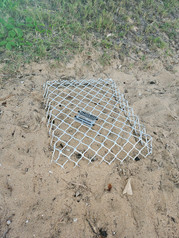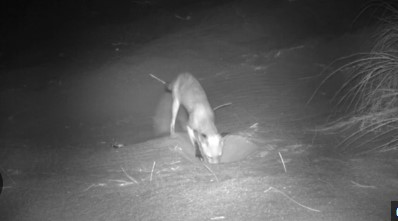We have had an exciting season with new volunteers joining us in the Fraser Coast this season. This gave us opportunities to train the incoming volunteers including three young members of the BNTAC, Butchulla group hence allowing the legacy to continue.
The season was not without its challenges with volunteers spending hours on the beach or researching to find solutions. The foxes were a problem this year and we had our top cages installed but the fox still found a way to get under the screens. We took different measures to deter the fox and found one or two were quite successful.
Cyclone Alfred subsequently caused significant erosion to the already compact, shrinking beach, severely compromising one of the turtle nests. Fortunately, the timing was opportune, and the hatchlings had already begun their journey to the surface. We carefully monitored the last nest. It survived the fox and the cyclone only for us to discover human intrusion.
The nature balance with wild animals is so fragile and if an attempt is made to dig a nest up that is not ready to emerge, this action will often destroy the hatchlings. Fortunately, we found the nest intact, allowing the hatchlings to emerge and go on their way.
Thank you to all the volunteers and beachgoers who monitored nests or showed interest in our work. Your support and public awareness are important for educating the community and protecting the turtles.














